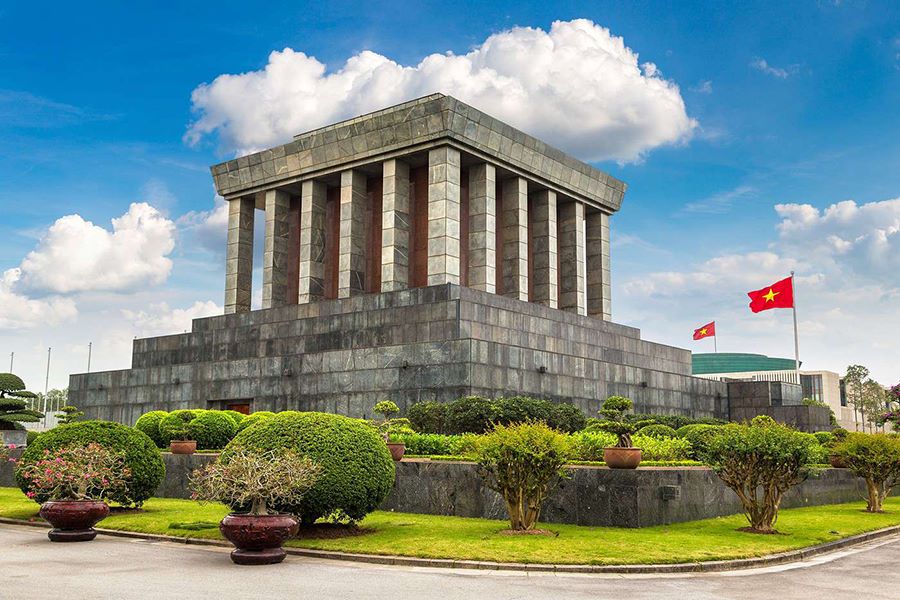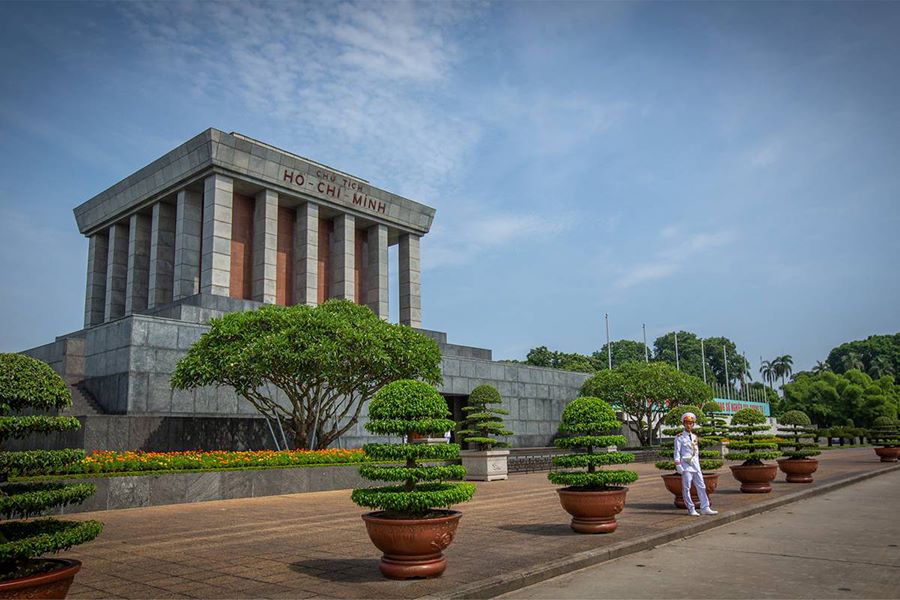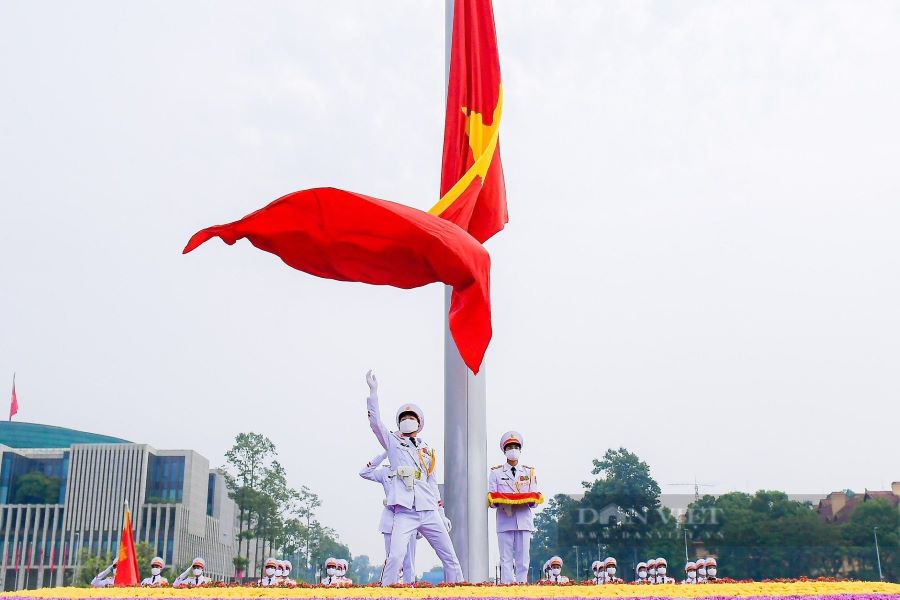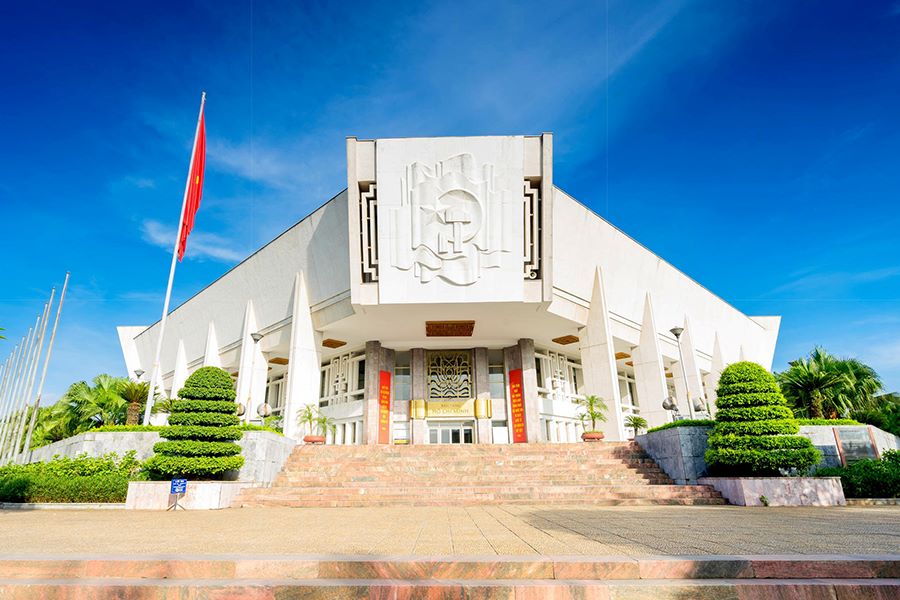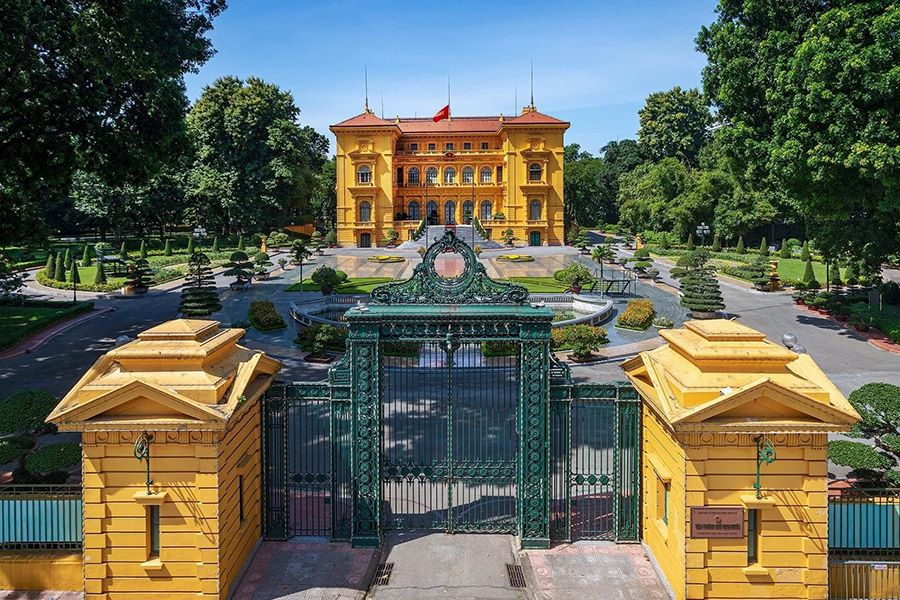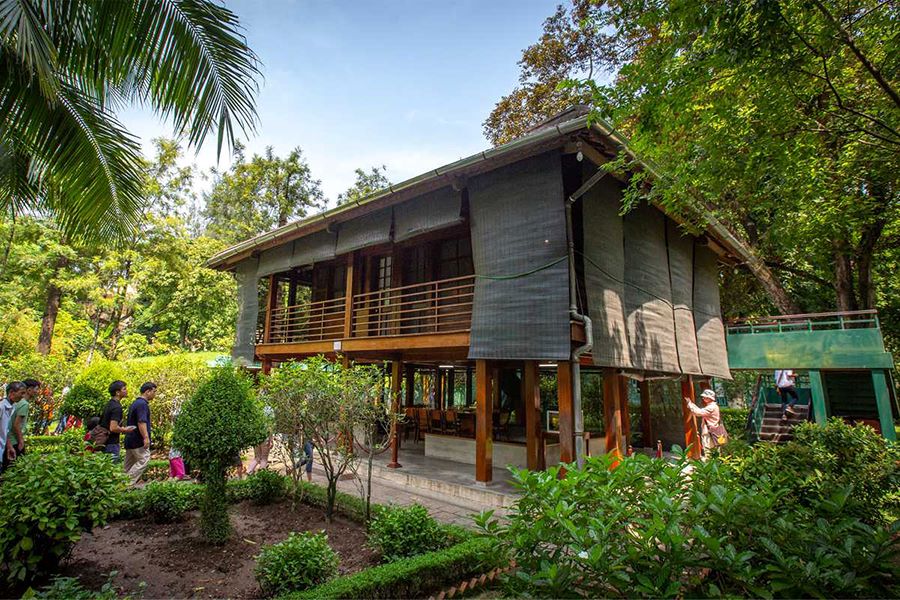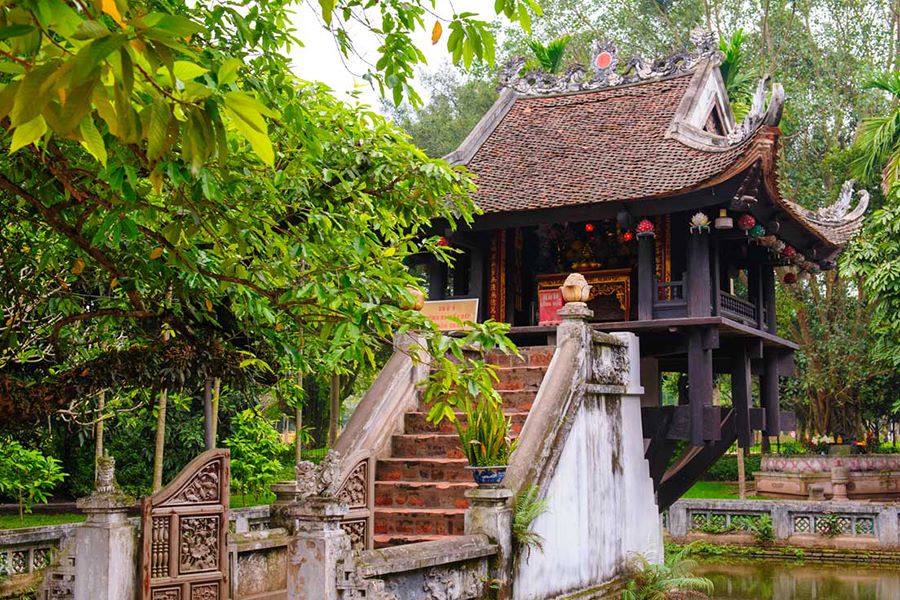Ho Chi Minh Mausoleum is one of the most significant constructions in Vietnam. Visiting this place will help you enhance your knowledge of Vietnamese history and enjoy a meaningful experience on your vacation. Ho Chi Minh Mausoleum has long been considered the first place to come for first-time travelers to Hanoi, as this place has a reputation for its great cultural and historical values. Viet Dan Travel will go into great detail about every aspect of this excellent work.
Contents
About Ho Chi Minh Mausoleum Hanoi
Ho Chi Minh Mausoleum is situated in the center of Ba Dinh Square. The precise address is 8 Hung Vuong, Dien Bien Ward, Ba Dinh District, Hanoi.
History of the Ho Chi Minh Mausoleum
Following President Ho Chi Minh’s passing, the Vietnamese government decided to preserve his body and enshrine it in the Mausoleum so that people could visit and remember him. The Mausoleum of Ho Chi Minh was formally inaugurated on August 29, 1975. The construction of this Mausoleum had the enthusiastic support of the Soviet Government. Its design was modified to better fit Vietnamese traditions and styles after drawing inspiration from Lenin’s Mausoleum in Moscow.
Significance of Ho Chi Minh Mausoleum
Ho Chi Minh Mausoleum is an extremely remarkable construction because it expresses the profound love and gratitude that Vietnamese people have for their great leader. Now, this work not only is a cultural and historical symbol of Hanoi, but also attracts millions of visitors who have come to this place because of its clean, beautiful, and solemn landscape.
Ho Chi Minh Mausoleum opening hours
The Mausoleum is open in the morning every Tuesday, Wednesday, Thursday, Saturday, and Sunday. The precise opening hours are as follows:
Summer & Fall (April – October): 7:30 a.m – 10:30 a.m
Winter & Spring (November – March): 8:00 a.m – 11:00 a.m
*** Opening hours are extended by 30 minutes on weekends and public holidays.
Ho Chi Minh Mausoleum is closed to visitors in the afternoon or on Mondays and Fridays. The Mausoleum will remain accessible to tourists if May 19th, September 2nd, or the first day of the Lunar New Year falls on a Monday or a Friday. In order to perform maintenance, it frequently closes for two months in the fall (October and November).
The top 3 things to do on your trip to Ho Chi Minh Mausoleum
In general, there are 3 must-do things when visitors go on a Ho Chi Minh Mausoleum tour:
Explore the architectural structure of the mausoleum
In front of the Mausoleum is Ba Dinh Square with a road for parades and 79 green French marigold trees, which represent President Ho Chi Minh’s age of 79. Ho Chi Minh Mausoleum’s overall design is a solid square block measuring 21.6 meters in height and 41.2 meters in width. The Mausoleum’s exterior is made of gray granite. Two soldiers are always on duty in front of the Mausoleum, whose shifts change every hour.
A room covered in marble can be found inside the Ho Chi Minh Mausoleum. Here, the body of President Ho Chi Minh is placed in a glass casket. The copper bed has a lotus-like pattern on it. Toughened glass made up three of the bed’s sides. Visitors can see President Ho Chi Minh through the clear glass, dressed in a faded khaki shirt and simple rubber sandals on his foot. Four soldiers are always on guard inside the room.
Watch the flag-raising and lowering ceremonies
If possible, plan your trip so that you can attend the daily flag-raising and lowering ceremonies at 6 a.m. and 9 p.m. respectively in Ba Dinh Square. These ceremonies will undoubtedly enhance your trip’s meaning and deepen your love for this nation.
Visit other historic attractions in the complex
Visitors who come to the Ho Chi Minh Mausoleum Complex can learn a great deal about Uncle Ho’s life and the Vietnamese liberation movement under his leadership.
Ho Chi Minh Museum
Ho Chi Minh Museum is the first location you should consider coming to after visiting Ho Chi Minh Mausoleum. This one-of-a-kind museum was constructed inside the Ho Chi Minh Complex, which took almost 5 years to complete.
Meetings, conferences, and scientific seminars for Vietnam’s national and international organizations are held in the 400-seat hall on the first floor of the museum. On the second floor, the museum’s expansive collection of more than 2,000 priceless historical artifacts and exhibits depict Uncle Ho’s life and the various stages of Vietnam’s revolution.
Presidential Palace
The Presidential Palace has distinctive architecture with a yellow color. This was intended to be Ho Chi Minh’s residence and working place. However, Uncle Ho declined and stated that it would be improper for him to live in such a lavish big building while his people were still in need and hungry. He lived in a small house in the rear instead (House No. 54).
House No. 54
This house is where President Ho Chi Minh worked from December 1954, so it was named “House No. 54”. Three rooms make up this tiny house. One is the working room of Uncle Ho, another is the kitchen, and his bedroom is the last one. The kitchen had a thermometer, and Ho Chi Minh would ask for a day off for elementary students whenever the temperature dropped below 10 degrees Celsius.
Ho Chi Minh’s house on stilts
After spending four years in House No. 54, President Ho Chi Minh moved to this stilt house. A fish pond and a variety of orchids that bloom all year round can be found in front of the house. The fish even used to rise to the surface when they heard sound, as the President used to clap his hands each time he fed the fish. Their habit remained even after Uncle Ho’s passing.
One Pillar Pagoda
One Pillar Pagoda was recognized as “the pagoda with the most unique architecture in Asia”. The pagoda was built in 1049, during the reign of King Ly Thai Tong. In the center of a pond stands a wooden square pagoda supported by a solitary concrete pillar. It was designed to resemble a lotus flower.
Ho Chi Minh Mausoleum rules for the best visit
- Dress neatly and formally
- Keep quiet inside the Mausoleum
- Have your belongings inspected at the security counter
- Follow the officers’ instructions when standing in line
- Lower your hat and keep it in your right hand.
Ho Chi Minh Mausoleum is one of the most well-known tourist destinations in Vietnam. Do not pass up the opportunity to visit the final resting place of Vietnam’s greatest leader and take in the serene and solemn atmosphere here. Hopefully, you and your loved ones will have a wonderful trip! To travel without problems, remember to take note of the opening hours and rules of the Mausoleum!

